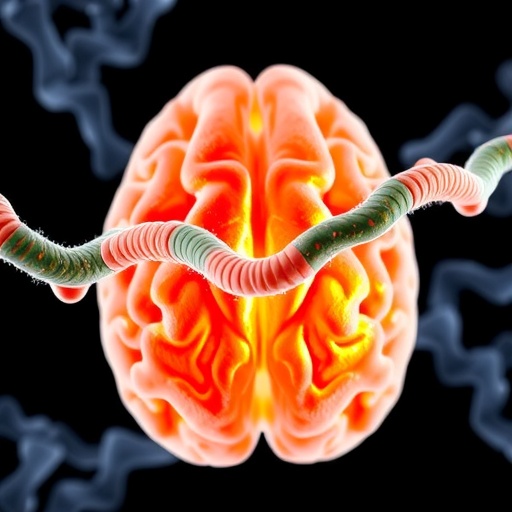In a pioneering exploration at the intersection of biology, psychology, and animal-assisted therapy, new research illuminates a remarkable benefit of service dog training for female U.S. veterans suffering from post-traumatic stress disorder (PTSD). This study, conducted collaboratively by Florida Atlantic University alongside the University of Maryland School of Nursing, the Medical College of Georgia, and Warrior Canine Connection, ventures into largely uncharted territory. It uniquely examines whether actively training service dogs—not just receiving their companionship—can alleviate the biological burden of stress and potentially slow cellular aging in female veterans, a demographic often overshadowed in military research despite bearing elevated PTSD rates.
Female veterans have served across multiple decades and have witnessed a dramatic expansion of their military roles since the establishment of full integration policies in 1948. Nonetheless, much of the extant research on PTSD and associated therapies remains predominantly male-centric. This study fills a critical void by focusing exclusively on women, recognizing their differentiated psychological and physiological responses to trauma exposures. Notably, the research leverages a controlled experimental design over eight weeks, randomly assigning veterans aged 32 to 72 either to an active dog training program or a control activity involving watching dog training videos.
Central to the investigation were biological markers that provide a window into the body’s stress and aging processes. Specifically, researchers measured telomere length in saliva samples and heart rate variability (HRV) via wearable monitors. Telomeres, protective caps at the ends of chromosomes, progressively shorten with cellular replication and stress, serving as a quantifiable proxy for cellular aging and senescence. HRV reflects autonomic nervous system flexibility and resilience, providing a dynamic index of stress regulation. These physiological metrics were complemented with rigorous psychological assessments employing validated scales for PTSD symptoms, perceived stress, and anxiety to capture multidimensional stress outcomes.
The findings signify a breakthrough in understanding animal-assisted interventions beyond psychological wellbeing. Veterans engaged in the service dog training program exhibited a statistically significant increase in telomere length, indicative of decelerated cellular aging. Contrastingly, the control group demonstrated a decrease in telomere length over the same period, representing accelerated biological aging. This divergence was most pronounced among veterans with prior combat exposure, who derived the greatest telomere preservation benefits from the active training intervention, suggesting that the relationship between trauma history and biological stress can be positively modulated through purposeful animal interaction.
In addition to telomere dynamics, heart rate variability measurements revealed enhanced autonomic regulation among those participating in the dog training, pointing to improved nervous system balance. These findings underscore how engaging in structured animal training fosters physiological resilience to stress at a foundational level. Heart rate variability has increasingly been recognized as a biomarker for vulnerability and recovery capacity in PTSD and trauma-exposed populations, thus these improvements may translate into meaningful health impacts.
Psychologically, both groups—those actively training dogs and those observing—experienced notable reductions in PTSD symptom severity, anxiety, and perceived stress scores across the study duration. Intriguingly, these mental health improvements were comparable regardless of combat history or the nature of the intervention. This pattern suggests that structured engagement and social interaction within the study framework itself may afford therapeutic gains, highlighting the importance of interpersonal connection and purposeful activity as modifiers of psychological distress in female veterans.
The researchers propose that the unique therapeutic potential of training service dogs, as opposed to merely interacting with them or watching demonstrations, resides in the active learning and responsibility inherent to caregiving roles. Participants practiced positive reinforcement techniques and animal behavior reading skills, which may have amplified emotional bonds not only with the training dogs but also with their own pets at home. This dual impact offers a distinctive blend of skill acquisition and emotional support, delivering greater benefit than general volunteering or passive animal interaction.
Beyond the biological and psychological outcomes, the study casts light on the broader implications for mental health treatment paradigms among female veterans. Conventional PTSD therapies often fail to address the complex interplay of biological aging and emotional trauma these women endure. By demonstrating the feasibility and efficacy of non-pharmacological, animal-assisted interventions that synergize mind and body healing, this research opens the door for personalized, holistic treatment modalities tailored to the needs of this growing yet underserved population.
Moreover, the findings highlight the potential scalability of such interventions. Not all veterans are able to care for a service dog due to logistical or personal constraints; however, volunteering as trainers offers an accessible alternative pathway that avoids the burdens associated with ownership while still delivering therapeutic benefits. This mode of engagement could be integrated within veteran support organizations to enhance mental health programming and reduce barriers to effective care.
This groundbreaking study is supported in part by the National Institutes of Health’s Eunice Kennedy Shriver National Institute of Child Health & Human Development, underscoring the federal commitment to advancing women’s health research in military contexts. As the scientific community increasingly appreciates the mind-body nexus in trauma recovery, interventions that address both psychological symptoms and cellular health represent a pivotal advancement. Future research may build on these findings by exploring longer-term outcomes and mechanistic pathways underpinning the observed benefits.
In illuminating the biological impact of service dog training on cellular aging markers alongside psychological wellbeing, this research underscores the intricate ways that meaningful human-animal relationships shape health outcomes. Female veterans with PTSD who engaged in this mission-driven program not only provided critical support to fellow veterans but simultaneously fostered their own healing. These results herald a promising avenue for enhancing resilience and reducing the hidden physiological toll of trauma in a population that deserves focused, innovative care strategies.
By integrating behavioral neuroscience with rehabilitation science and animal-assisted therapy, the study advances a multidisciplinary framework that can inform clinical practice, policy, and veteran care initiatives. The encouraging biological shifts documented here also invite further inquiry into how similar interventions might be adapted for other trauma-exposed groups. As science continues to reveal the tangible benefits of service dogs beyond companionship, such research paves the way for transformative approaches to mental health treatment anchored in empathy, connection, and active engagement.
Subject of Research:
People
Article Title:
Veterans Training Service Dogs for Other Veterans: An Animal-Assisted Intervention for Post-Traumatic Stress Disorder
News Publication Date:
29-Aug-2025
Web References:
https://www.fau.edu/
https://www.mdpi.com/2076-328X/15/9/1180
http://dx.doi.org/10.3390/bs15091180
References:
Friedmann, E., Krause-Parello, C., Taber, D., Zhu, H., Quintero, A., & Yount, R. (2025). Veterans Training Service Dogs for Other Veterans: An Animal-Assisted Intervention for Post-Traumatic Stress Disorder. Behavioral Sciences, 15(9), 1180. https://doi.org/10.3390/bs15091180
Image Credits:
Alex Dolce, Florida Atlantic University
Keywords:
Post traumatic stress disorder, Cellular senescence, Dogs, War, Telomeres, Anxiety, Stress management, Behavior disorders, Psychological stress, Heart rate, Nervous system, Mental health, Positive reinforcement
Tags: animal-assisted therapy benefitsbiological impact of stress reliefcontrolled experimental design in psychologydogs and cellular aginggender differences in PTSD researchinterdisciplinary research in mental healthpsychological effects of dog trainingPTSD and female veteransservice dog training for veteransstress reduction through animal companionshipunique needs of female veteransveteran mental health studies





